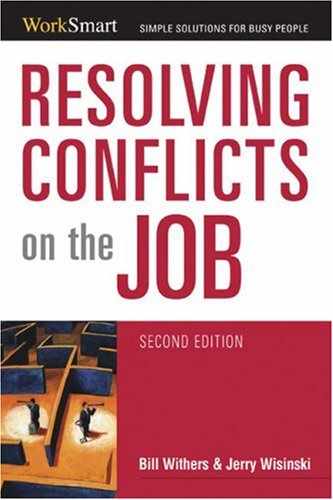Telling people how to think about conflict makes about as much sense as teaching dogs how to think about eating. By the time we are adults, we know a lot about conflict and know what we think about it. We face conflict every day—as we struggle within ourselves, and as we interact with family, friends, coworkers, and the rest of our world.
As adults, we have organized what we have learned about conflict into our own personal theories. We know what conflict is and where it comes from, what we think about it, and how we go about it. We know what works for us, and what doesn’t. We know when we should adhere to our theory and when we should try something else. We know when we are trying something else because we think it is good for us, and when we are trying something else because we are backsliding.
When I spend time with groups of adults who come to workshops to learn about conflict, I tell them that they are a “room full of experts.” They have all organized their experience into a set of rules for what to do when—their personal theories of conflict. The only reason for these experts to come together is to compare notes or to learn about other people’s approaches. As the teacher, I may have spent more time reading, thinking about, and consciously observing conflict than they have. I may be able to share some theories about conflict that are different from the ones they have crafted. They get a chance to try some ideas on for size, compare notes with the other experts in the room, and just maybe come away with some new actions to apply to their daily lives.
In these workshops, we always leave room for “f’rinstances.” This is a half hour or more at the end of the workshop when participants can ask about specific applications: “F’rinstance, there’s this guy at work. . . .” Nine times out of ten the person posing the case knows just what needs to be done and wants to hear from me or the group that there is some easier way or wants reassurance that he or she can act without risk. Sometimes, though, the person will come up with something entirely new—a different way of seeing the conflict, a different way to act, a different way to react, or a different way to think or feel.
This is when real learning takes place.
In the first edition of this book, Jerry Wisinski created a similar pattern for learning—that is, the chapters have some ideas for you to think about that are followed by exercises to help you reflect on what you are learning and to see if you can apply this knowledge to your life. We have updated some language in this new edition to reflect advances in the field since 1993, and we added some new things to think about that I have culled from my experience as a mediator and a teacher, and from my work with people at all levels of businesses and nonprofit organizations. A new chapter on giving and receiving feedback will be helpful to people who dread that infamous management task. The chapter on teamwork has been updated, and there are new tools for reflecting on conflict and to help you to analyze specific conflicts you are working through and for planning how you can best approach another person at work with whom you may be having a difference.
The appendix at the end of the book pulls many of the reflective questions together to help you to remember what you have learned and to apply it to your own real-world situation.
As you read, think of your own “f’rinstances” and use those to work through the exercises. The exercises are simple, and if you only read through them, you will find nothing helpful in them. If, instead, you write out your answers and use the exercises to help you to think through your own “f’rinstances,” you may be surprised to learn what a conflict expert you really are.
